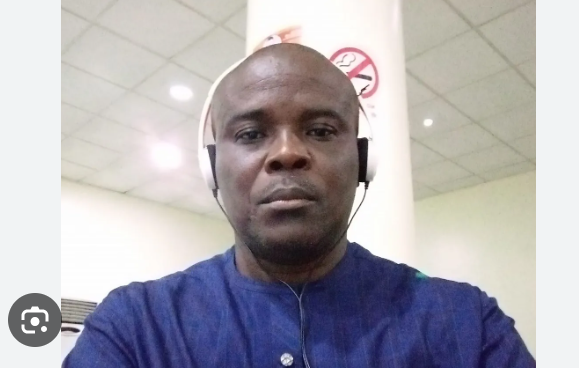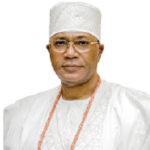
The Nigerian Labour Congress, through its National Secretary-General, has kicked against the new unemployment figures released by the National Bureau of Statistics saying it is not reflective of the current realities in the country.
The view was also corroborated by economists who insisted the new jobless data were far apart from the current state of unemployment in the country.
Despite stating that 133 million Nigerians were multi-dimensionally poor as of November 2022, the NBS, on Thursday, revealed that unemployment dropped to 4.1 per cent in the first quarter of 2023. This is a huge drop from the 33 per cent the statistics body reported in Q4, 2020.
In November, the NBS revealed that 63 per cent of Nigerians were poor due to a lack of access to health, education, living standards, employment, and security.
In its Nigeria Labour Force Survey (4th Quarter 2022 and 1st Quarter 2023) report, the statistic body said it had enhanced its methodology of collecting labour market data through the Nigeria Labour Force Survey in line with International Labour Organisation guidelines.
The body said due to the changes and enhancements it made in its recent survey, it was impossible to do a direct comparison of its recently released results with the old ones.
It explained that to count as employed, an individual must have worked for at least “one hour in the previous seven days – making them employed at work – or they must typically work for pay or profit, even if they did not do so in the previous seven days – making them employed, but temporarily absent. This approach follows the ILO standard.”
Under the old methodology, an individual is considered employed if they worked for 20 hours and above weekly. The NBS disclosed that it sampled 35,520 households nationwide. According to it, about three-quarters of working-age Nigerians were employed (73.6 per cent in Q4 2022 and 76.7 per cent in Q1 2023), as most people were engaged in some type of job for at least one hour a week, for pay or profit.
It said, “Unemployment stood at 5.3 per cent in Q4 2022 and 4.1 per cent in Q1 2023. This aligns with the rates in other developing countries where work, even if only for a few hours and in low-productivity jobs, is essential to make ends meet, particularly in the absence of any social protection for the unemployed.”
The NBS stated that about one-third (36.4 per cent in Q4 2022 and 33.2 per cent in Q1 2023) of employed persons worked less than 40 hours per week in both quarters.
Underemployment rate, the share of employed people working less than 40 hours per week and declaring themselves willing and available to work more, was 13.7 per cent in Q4 2022 and 12.2 per cent in Q1 2023, the NBS further said.
The National Secretary-General of the Nigerian Labour Congress, Chris Onyeka, told The PUNCH that the report does not reflect the reality in the labour market. According to him, the figure does not adequately capture visible facts has lost its merit and should not be reckoned with.
Onyeka said, “The statistic is not reliable. It is as simple as that. It is not in sync with what is on the ground. We all know that the rate of unemployment in Nigeria is increasing.”
The Chief Executive Officer, Financial Derivatives Company Limited, Mr Bismarck Rewane, queried the new parameter used by the statistical body in arriving at the new rate of employment, explaining that it would be difficult to justify the data considering the situation on the ground.
He said, “I have had conversation around this with the former NBS CEO. How do you explain and justify this? Taking someone who has worked for one hour in a week as employed will be very difficult considering what is on the ground here.”
Also, the Chief Executive Officer of the Centre for the Promotion of Private Enterprise, Muda Yusuf, also stated it was difficult to accept the recently released unemployment report. He argued that the methodology used to generate the statistics needs to be reviewed to reflect what is real.
Yusuf told The PUNCH, “Four per cent unemployment rate in this part of the world is as good as full employment. Empirical evidence abounds of many young people, especially the educated ones, who practically have nothing to do.
“It is true that there are several others who are engaged in different activities to make a living. There are also millions engaged in the informal sector. But one-hour engagement would not pass for being an employed person.”
In April 2023, KPMG revealed that Nigeria’s unemployment rate increased to 37.7 per cent in 2022 and would further rise to 40.6per cent, because of the continuing inflow of job seekers into the job market. It said unemployment would continue to be a challenge because of slow economic growth and the inability of the economy to absorb the 4-5 million new entrants into the job market every year.
It predicted that unemployment would grow to 43 per cent in 2024.
Commenting on the recent NBS report, the Centre for Social Justice in a report expressed concerns about the NBS’s plan to change its methodology to measure unemployment in the country.
The Lead Director of CSJ, Eze Onyekpere, in a report, stated, “The whole basis of a job report is to help the government to determine whether its plans, policies and laws geared at reducing unemployment are achieving the desired milestones.
“What is the point of a job report that tells the government that more Nigerians are employed when it is a clear and notorious fact that unemployment is increasing?”





